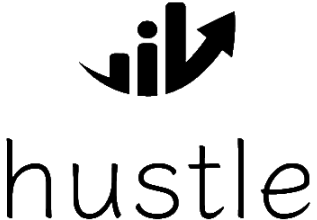Starting to trade in the financial markets can be a thrilling and potentially profitable venture. This comprehensive guide will walk you through the essential steps of beginning your trading journey, from understanding the basics to developing and executing a sound trading strategy. Whether you’re a novice looking to make your first trade or someone seeking to refine your approach, this article will provide valuable insights into how to navigate the complexities of trading and set the foundation for financial success.
Key Takeaways
- Begin with a clear understanding of your risk tolerance and financial goals to guide your trading decisions.
- Choose the right brokerage for your needs, and practice trading with virtual tools before investing real money.
- Develop a solid trading strategy based on market knowledge and maintain a journal for continuous learning and improvement.
- Learn to execute trades effectively while managing your portfolio to adapt to changing market conditions.
- Commit to ongoing education by leveraging books, trading communities, and staying updated with market news and trends.
Understanding the Basics of Trading

Assessing Your Risk Tolerance and Financial Goals
Before diving into the world of trading, it’s crucial to assess your risk tolerance and set clear financial goals. Your comfort with risk and investment horizon are key factors that will shape your trading decisions. For instance, a high-risk tolerance might lead you to explore volatile markets, while a preference for stability could steer you towards more conservative investments.
- High-risk tolerance: Potential for higher returns, but greater risk of loss
- Moderate risk tolerance: A balance between risk and reward
- Low-risk tolerance: Focus on preserving capital, lower returns
Your financial goals are equally important. Whether you’re saving for retirement, a home, or building an emergency fund, your objectives will dictate the strategies you employ. It’s advisable to periodically review your goals and risk profile, as they can evolve with changes in your personal circumstances or financial market conditions.
Aligning your investments with your life’s objectives allows for a more personalized and effective trading plan.
Remember, there’s no one-size-fits-all approach to trading. Understanding your unique situation is the first step towards making informed and successful trades.
The Difference Between Trading and Investing
Understanding the distinction between trading and investing is crucial for anyone looking to enter the financial markets. Trading typically involves frequent buying and selling of stocks, currencies, or other assets, aiming to capitalize on short-term market movements. On the other hand, investing is more about the long-term growth of wealth through the purchase and holding of investment vehicles like stocks, bonds, or mutual funds.
- Trading is often seen as a more active approach, requiring constant market analysis and quick decision-making.
- Investing is considered a passive strategy, focusing on the gradual appreciation of assets over time.
While trading seeks to exploit short-term market fluctuations, investing is geared towards building wealth gradually through long-term holdings.
The choice between trading and investing should align with your financial goals, risk tolerance, and the time you can dedicate to market activities. Whether you opt for the quick pace of trading or the steady approach of investing, both require a solid understanding of market principles and a disciplined mindset.
Essential Market Knowledge for Beginners
Before diving into the world of trading, it’s crucial to arm yourself with essential market knowledge. This foundation will not only help you understand the movements and trends within the markets but also enable you to make informed decisions. Here are some key areas to focus on:
- Market Types: Learn the differences between stock markets, bond markets, and commodities markets.
- Market Participants: Understand who the players are, including retail investors, institutional investors, and market makers.
- Order Types: Familiarize yourself with market orders, limit orders, and stop orders.
- Analysis Methods: Grasp the basics of fundamental and technical analysis.
Remember, a solid grasp of market fundamentals is the bedrock upon which successful trading strategies are built.
It’s also beneficial to explore educational resources tailored for beginners. Many platforms offer guides, courses, and even virtual trading tools to practice without financial risk. As you embark on this journey, keep in mind that knowledge is power in the trading world.
Setting Up Your Trading Account

Choosing the Right Brokerage
Selecting the right brokerage is a critical step in your trading journey. Consider the brokerage’s usability, fee structure, and the depth of analytic information available to ensure it aligns with your trading style and needs. Brokerages vary in their offerings, from user-friendly platforms for beginners to complex tools for seasoned investors.
- Evaluate the platform’s ease of use.
- Assess the range of research and analysis tools provided.
- Understand the fee structure and any additional costs.
- Check for international trading requirements if necessary.
When you apply to open a brokerage account, you’ll need to provide basic identification, tax, and income information. The process is generally straightforward and can be completed in about 15 minutes once you have all the required details.
Remember, your choice of brokerage can significantly impact your trading experience. Take the time to compare the features and services of various brokerages, and don’t hesitate to use resources like StockBrokers.com for reviews and comparisons.
Funding Your Account and Understanding Fees
Once your application is approved, often within a few hours, you can proceed to fund your account. The process is straightforward and can be completed online, typically taking about 15 minutes. You’ll need to provide personal information such as your name, address, and identification details.
Understanding the fees associated with trading is crucial as they can significantly impact your profits. Here’s a breakdown of the common types of fees you might encounter:
- Trading Commissions: Charged per trade, varying by broker.
- Account Maintenance Fees: Regular charges to maintain your account.
- Inactivity Fees: Applied if you don’t make trades within a certain period.
- Withdrawal Fees: Costs for transferring money out of your account.
Remember, while some brokers offer fee-free transactions at specific ATMs or under certain conditions, out-of-network ATM fees and other charges may still apply. Always check the Deposit Account Agreement for a complete list of fees.
It’s essential to factor in these costs when calculating potential returns and to choose a broker that aligns with your trading frequency and style to minimize fees.
Practicing with Virtual Trading Tools
Before diving into the real market, practicing with virtual trading tools is a crucial step. These simulators provide a risk-free environment where you can test your strategies, understand market dynamics, and learn the mechanics of placing trades without the fear of losing actual money. Many online brokerages offer these tools, and platforms like the Investopedia Stock Simulator are highly recommended for beginners.
It’s important to treat virtual trading as seriously as you would real trading to gain the most benefit from the experience.
After setting up your virtual account, take the time to familiarize yourself with the platform’s features and functionalities. Here’s a simple checklist to get you started:
- Ensure your virtual account reflects your real investment capital
- Practice placing different types of orders (market, limit, stop-loss, etc.)
- Analyze the outcomes of your trades and adjust your strategy accordingly
- Use the simulator to understand the impact of market news and events on stock prices
Remember, the goal of using a simulator is not just to win virtual money, but to gain experience and confidence that will be invaluable when you start real trading.
Developing a Trading Strategy

Time in the Market vs. Timing the Market
When it comes to trading, there’s a perennial debate: should you spend more time in the market or attempt to time the market? The distinction between these two approaches is crucial for developing a successful trading strategy.
Many new traders are tempted by the idea of timing the market, aiming to buy low and sell high based on predictions and market movements. However, this approach often requires constant monitoring and can incur higher transaction fees due to frequent trading.
On the other hand, spending time in the market typically involves a buy-and-hold strategy. This method is grounded in the belief that, over time, markets will generally trend upwards, rewarding those who are patient. It’s a strategy that’s not only less time-consuming but also potentially more cost-effective, as it minimizes trading fees.
While the S&P is close to an all-time high, it’s important to remember that not all markets reflect the same valuations. Diverse strategies and patience can lead to different outcomes across global markets.
Here are some key points to consider when deciding between these two approaches:
- Timing the market requires a deep understanding of market indicators and the ability to act quickly.
- Time in the market benefits from historical market trends and compounding returns.
- Frequent trading can lead to higher costs and requires more active management.
- A long-term perspective can mitigate the impact of short-term market volatility.
Creating and Testing Your Trading Plan
Once you’ve developed a trading strategy, it’s essential to integrate it into a comprehensive trading plan. Your plan should detail your entry and exit points, capital allocation for each trade, and your maximum acceptable loss. It’s not just about the numbers; understanding the markets and the securities you intend to trade is crucial. This includes trading hours, holiday schedules, and the potential impact of news events on your trades.
Before putting real money on the line, consider practicing your strategies through a trading simulation or a demo account.
Here are some steps to follow when testing your trading plan:
- Simulate your trading strategy using historical data.
- Adjust your plan based on the simulation outcomes.
- Practice with a demo account to get a feel for live trading.
- Review and refine your trading plan regularly.
Remember, a well-tested trading plan can help you navigate the markets with greater confidence and control. It’s a continuous process that evolves with your experience and the changing market conditions.
Keeping a Trading Journal for Continuous Improvement
Maintaining a trading journal is a critical step towards continuous improvement in your trading journey. It serves as a personal record where you can reflect on both successful and unsuccessful trades, understand the decisions behind them, and identify patterns in your trading behavior.
A trading journal should include details such as the date of the trade, the securities bought or sold, the reasons for the trade, the entry and exit points, and the outcome of the trade. Over time, this data can reveal valuable insights about your trading style and strategy effectiveness.
By consistently reviewing your trading journal, you can make informed adjustments to your strategy, ensuring that your trading decisions are driven by logic and experience rather than emotion.
Remember to not only record the mechanics of each trade but also your emotional state and market observations at the time. This holistic approach can help you to better understand the impact of external factors and personal biases on your trading decisions.
Executing Trades and Managing Your Portfolio

Learning to Place Orders and Monitor Stocks
Once you’ve set up your trading account, the next step is to learn how to place orders and monitor your stocks. This is a critical skill that involves understanding the different types of orders you can place, such as market orders, limit orders, and stop-loss orders. Each type of order serves a specific purpose and offers a level of control over the price at which you buy or sell stocks.
- Market orders execute immediately at the current market price.
- Limit orders set a maximum or minimum price at which you’re willing to buy or sell.
- Stop-loss orders help limit potential losses by setting a price at which your stock will be sold automatically if the market turns.
It’s essential to practice these skills using a virtual trading platform or with small amounts of money before committing significant capital. This hands-on experience will help you understand the mechanics of trading and the importance of timing.
Monitoring your portfolio is just as important as placing trades. Keep a close eye on the performance of your stocks, and be prepared to make adjustments as needed. Use tools and resources like live quotes, which are typically available for 15-20 seconds, to make informed decisions. Remember, the goal is not just to make trades, but to make profitable trades that align with your financial goals and risk tolerance.
Diversification and Portfolio Management
Diversification is a cornerstone of sound portfolio management, often heralded as the only free lunch in the investment world. By spreading your trades across various asset classes and sectors, you can mitigate the risk associated with any single investment underperforming. This strategy is crucial for traders who seek to maintain a balanced approach to risk and reward.
When considering diversification, it’s important to recognize the difference between owning individual stocks and investing in collective funds. While the former offers direct control over your holdings, the latter provides a more hands-off approach, often preferred by those who lack the time or expertise to research individual stocks.
Learn more: How you can diversify your portfolio in 2024
Here’s a simple breakdown of diversification strategies:
- Diversify across multiple asset classes (e.g., stocks, bonds, commodities)
- Diversify within asset classes (e.g., different sectors and countries)
- Consider collective funds for broader exposure with less effort
Remember, no strategy can guarantee performance or protect entirely against losses, but diversification is a key step towards a more resilient portfolio.
Adjusting Strategies Based on Market Conditions
Adapting your trading approach to the ever-changing market conditions is crucial for maintaining profitability. By staying informed, you can make more informed decisions and adjust your trading strategies accordingly. It’s important to recognize when a strategy is no longer effective and to be flexible enough to implement new tactics.
Trading requires continuous evaluation and adjustment. As market dynamics shift, so should your strategies to align with new trends and information.
Here are some common adjustments traders might consider:
- Rebalancing portfolio allocations to manage risk
- Utilizing stop-loss orders to limit potential losses
- Shifting from aggressive to conservative strategies during high volatility
- Taking profits from well-performing assets to reinvest in undervalued stocks
Remember, the goal is to stay ahead of the market, not just to keep up with it. Regularly reviewing and refining your trading plan is essential for long-term success.
Growing Your Trading Skills and Knowledge

Continual Learning with Books and Resources
The journey to becoming a proficient trader is ongoing, and continual learning is a cornerstone of trading success. As markets evolve, so should your knowledge and strategies. A well-curated reading list can be an invaluable resource for staying informed and refining your approach. For instance, the ‘20 Best Stock Trading Books for 2024′ on investor.com includes titles like ‘A Random Walk Down Wall Street’ and ‘The Little Book of Common Sense Investing’, which are essential reads for any trader.
Beyond books, expanding your education through various online courses can also be beneficial. From ‘Investing for Beginners’ to ‘Technical Analysis’, there are courses tailored to every level of expertise. Here’s a quick list of educational categories you might explore:
- Investing Basics
- Trading Fundamentals
- Advanced Technical Analysis
- Market Economics
Remember, the key to growth in trading is to never stop learning. Regularly updating your knowledge base and skill set can help you adapt to market changes and uncover new opportunities.
Joining Trading Communities for Support
Joining a trading community can be a transformative step for both novice and experienced traders. Networking with peers and sharing experiences can lead to a deeper understanding of market dynamics and trading strategies. Members often benefit from collective knowledge and support, which can be crucial during volatile market periods.
- Membership Benefits – Communities like the FIX Trading Community offer a range of benefits. Participating in the organisation’s work provides opportunities to learn about the latest developments in advance.
- Shared Resources – Access to exclusive webinars, forums, and educational materials.
- Mentorship Opportunities – The chance to receive guidance from more seasoned traders.
By engaging with a community, you’re not just gaining access to resources; you’re becoming part of a network that values growth and success in trading.
Staying Updated with Market News and Trends
In the fast-paced world of trading, staying informed is not just beneficial; it’s essential. Keeping abreast of market news and trends can be the difference between making a well-timed trade or missing an opportunity. Utilize resources like ‘Stock Market Today’ for daily updates on the latest prices and price changes across major indices such as the Nasdaq, S&P 500, and the Dow Jones Industrial Average.
To systematically track and analyze market movements, consider the following approaches:
- Regularly check financial news websites and market analysis platforms.
- Subscribe to newsletters and market outlook reports.
- Set up alerts for news related to your holdings or watchlist.
- Engage with trading communities to discuss and interpret market events.
By dedicating time each day to review market conditions, you ensure that your trading decisions are informed by the most current data and insights.
Remember, the market is dynamic, and what worked yesterday may not work today. Stay flexible and be prepared to adjust your strategies in response to new information.
Conclusion
Embarking on the journey of trading and investing can be both exciting and daunting. As we’ve explored, starting with a solid understanding of the markets, a well-funded account, and a clear risk tolerance is essential. Whether you’re day trading or investing for the long term, the key is to begin with education, practice through virtual portfolios or small trades, and maintain a disciplined approach with a trading journal. Remember, while the allure of quick profits is tempting, the wisdom of ‘time in the market’ often outweighs ‘timing the market.’ With tools like fractional shares and no minimum balance requirements, even a modest sum like $100 can be the seed for your financial growth. Start today, stay informed, and grow your wealth steadily over time.
Frequently Asked Questions
Can I practice trading before I invest real money?
Yes, many investment platforms offer stock market simulators or similar tools that allow you to practice trading with virtual money. This is a great way to get familiar with market conditions and trading techniques without financial risk.
What time can I start day trading?
The specific time you can start day trading depends on the market you’re interested in. For example, the US stock market typically opens at 9:30 AM Eastern Time and closes at 4:00 PM. However, pre-market and after-hours trading are also available through some platforms.
How much money do I need to start investing?
Most trading platforms in the United States don’t require minimum account balances. You can start with as little as a dollar or two and even buy fractional shares of stock. Virtual trading, also known as paper trading, is another option for practicing with no money at all.
Which type of trading is best for beginners?
Longer-term investing may be a lower-risk way for beginners to make money from the stock market. Starting with investments that can be held for years or decades, such as mutual funds or ETFs, is often recommended over rapid day trading.
Is $100 enough to start investing?
Absolutely, $100 is enough to start investing. Online brokers and robo-advisors often have low or no minimum investment requirements, and fractional shares enable you to invest in high-value stocks with smaller amounts of money.
What is the difference between trading and investing?
Trading involves buying and selling securities frequently to capitalize on market fluctuations and generate quick profits. Investing, on the other hand, is about purchasing securities such as stocks, bonds, and ETFs with the intention of holding them for longer periods to benefit from their growth in value over time.







